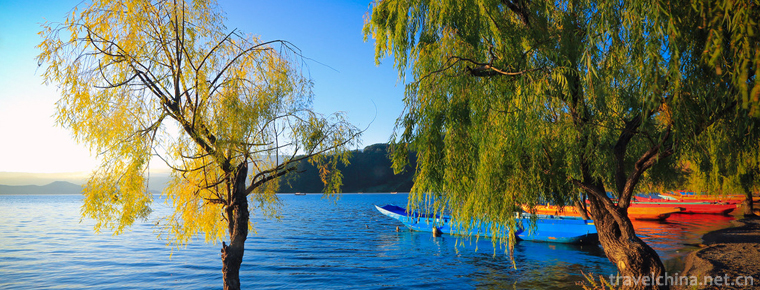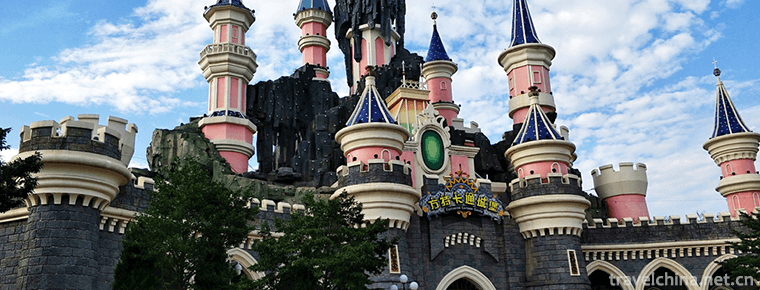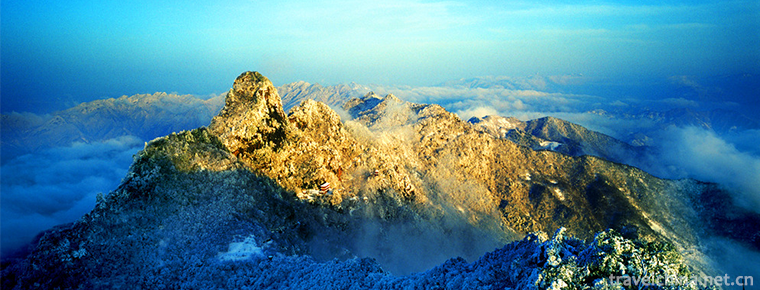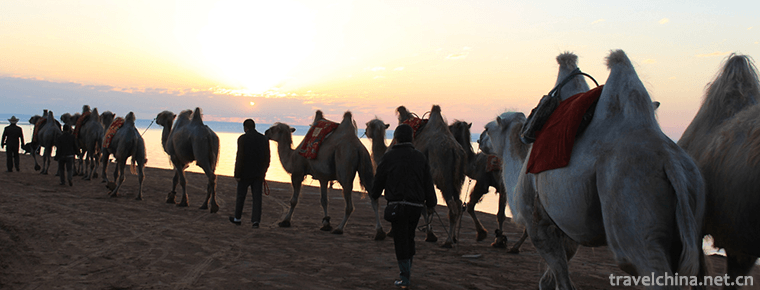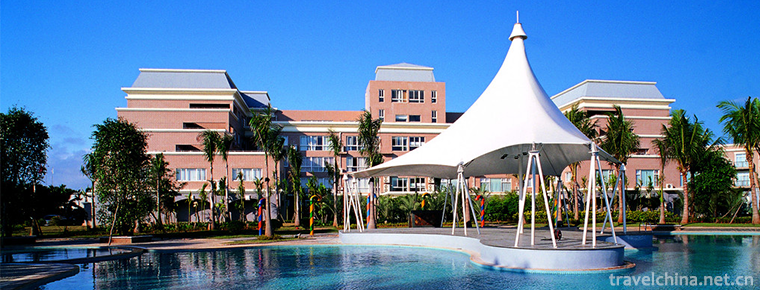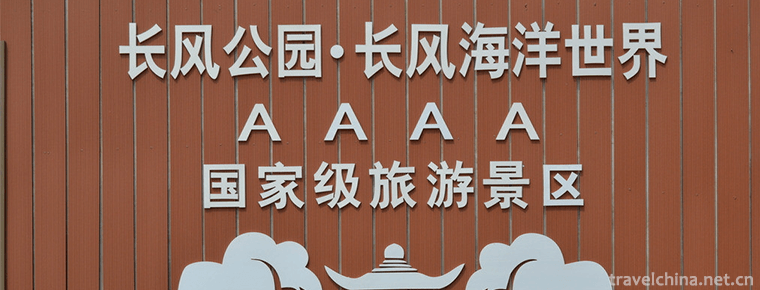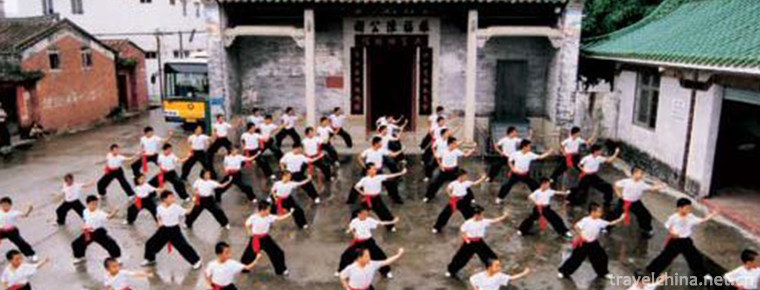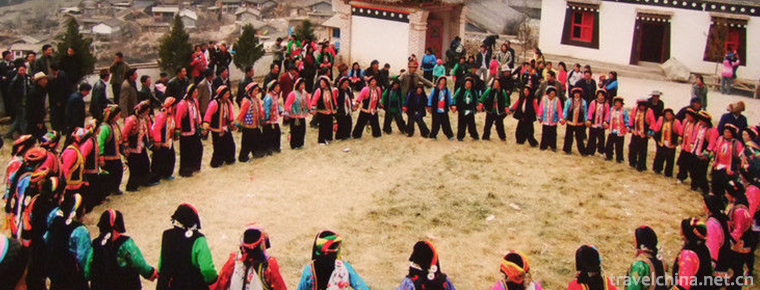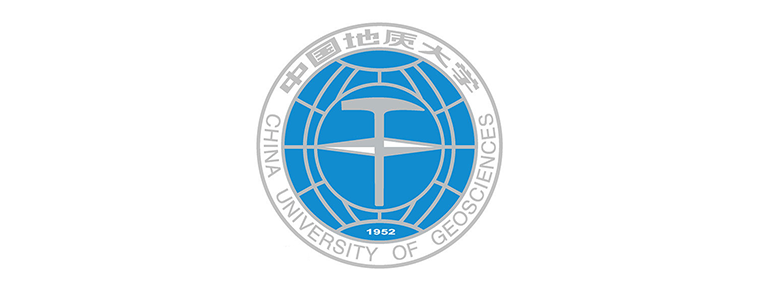Guangxi Medicinal Herb Garden
Guangxi Medicinal Herb Garden
Guangxi Medicinal Botanical Garden is located in Xiangzhu Avenue, Nanning City, Guangxi Zhuang Autonomous Region. It was founded in 1959 and covers an area of 202 hectares. It is one of the 21 large botanical gardens open to the outside world in China. Over the past 52 years, Guangxi Medicinal Botanical Garden has collected and preserved more than 5600 species of living medicinal plants, including more than 100 rare and endangered medicinal plants.
Guangxi Medicinal Botanical Garden is located in the eastern suburbs of Nanning City 8 kilometers away, covering more than 2 million square meters. It is one of the largest medical botanical gardens in China and Southeast Asia. In the garden, the trees are green, the vines are vertical and horizontal, and the scaffolding is dotted with them, so the flowing water of the bridge is more elegant and interesting. The park has established a tourism company, officially launched a one-day tour of Guangxi Medicinal Botanical Garden, which can receive large-scale visitors. Guangxi Medicinal Botanical Garden is a comprehensive garden with tourism, scientific research, teaching and production. On October 11, 2018, it was selected as the "National Practical Education Base for Primary and Secondary School Students".
Historical evolution
In the second half of 1958, in order to carry out the directive spirit of the State Council, the Party Committee and the People's Committee of the autonomous region in developing the production of Chinese medicinal materials, tap the Treasury of the motherland's medicine, develop the medical and health undertakings, vigorously develop the production and scientific research of Chinese medicinal materials, the Health Department of the Autonomous Region began to prepare and build the Guangxi Pharmaceutical
On February 14, 1959, the Guangxi Pharmaceutical Test Site was established with the approval of its superiors. On the evening of March 10, the founding meeting of Guangxi Pharmaceutical Testing Station was held. Xie Xinting, deputy director of the Ministry of Health, attended the meeting and announced the formal establishment of Guangxi Pharmaceutical Testing Station. In December 1959, the Guangxi Institute of Pharmaceutical Research was established with the approval of the People's Committee of the Autonomous Region. Guangxi Pharmaceutical Research Institute and Guangxi Pharmaceutical Testing Site Office, a set of leading groups.
In 1962, in order to implement the eight-character policy of "readjustment, consolidation, enrichment and improvement" of the Central Committee, the Guangxi Regional People's Committee at that time authorized the revocation of the Guangxi Institute of Pharmaceutical Research, retained 35 technicians and merged them into the drug testing ground to continue the research work.
In 1963, in order to carry out the call of the Central Committee that the whole Party and the whole people should start work, run agriculture and grain in a big way, and the directives of the Party Committee of the District on reducing the population of cities and towns, further reduce the staff and workers, save state financial expenditure and support the agricultural front, according to the experience of the production of medicinal materials in recent years, it was considered inappropriate to continue to produce medicinal materials with the workers and land on the whole site, and it was necessary to turn to produce food. Lord.
On May 14, 1963, the No. 6 Health Department of Guangxi District People's Committee (63) approved the "Report on Reducing the Scale of Pharmaceutical Testing Ground and Renaming it as Pharmaceutical Research Institute", which agreed to reduce the scale of Pharmaceutical Testing Ground and rename it as Pharmaceutical Research Institute, with the main task of drug research and to plant some medicinal materials according to the labor force situation. The staffing establishment is set at 150 (435 employees, 150 retained and 285 streamlined). The 290 workers who belonged to Santang Township Liberation Brigade in Yongning County, except 30 who had been transferred to the production team of medicinal materials, remained to grow medicines, the rest of them were assigned to grow grain mainly and changed ownership by the whole people to collective ownership.
On October 10, 1963, Nanning Municipal People's Committee (63) Nanhui No. 310 "Reply on Agreeing to Return Collective Farmers under the Leadership of Santang Commune" agreed to transfer 170 laborers and 247 family members of six production teams, including Xiuqiao, Dawu, Lu'an, Ertang, Nahe and Nadao, originally led by the Institute of Pharmaceutical Research, to the leadership of Santang Commune in the suburbs (later) In accordance with the requirements of beneficial production and farmers, the Nanning Municipal People's Committee has agreed to change its leadership to Changdao Commune. On October 19, No. 456 of the Secret Letter of the General Office (63) of the Guangxi District People's Committee issued an order. In view of the fact that the Nanning Municipal People's Committee has expressed its consent to the collective peasants allocated by the Drug Research Institute in the receiving area, it requested the Department of Health to contact Nanning directly for handover procedures. On December 9, the Changdao Commune and the Institute of Pharmaceutical Research held a meeting of Representatives and formally handed over to the leadership of Changdao Commune (for the convenience of leadership, the Commune set up the Landing Bridge Bridge Brigade to lead the above six production teams).
In December 1970, the Guangxi Regional Reform Committee approved the merger of Guangxi Pharmaceutical Research Institute, Guangxi Pharmaceutical Inspection Institute, Guangxi Institute of Traditional Chinese Medicine and Guangxi Martyrs Cemetery to establish Guangxi Pharmaceutical Research Institute. The Institute consists of an outpatient department, a pharmaceutical factory, a South Pharmaceutical Station and a medicinal botanical garden. The two production teams of Hongwen and Lixin (formerly Baifen and Naqi were merged and renamed Hongwen and Nafu was renamed Lixin) were managed by the Medicinal Botanical Garden. Under the leadership of Guangxi Institute of Pharmaceutical Research, the Medicinal Botanical Garden has offices of Party Branch and Business Office. Its main tasks are the introduction and cultivation of medicinal plants, the research and production of high-yielding cultivation of Guangxi medicinal materials and some grain.
On January 16, 1973, Secretary Qiao Xiaoguang of the Party Committee of the District approved the pilot implementation of the "unified management of the two production teams by the Medical Institute". After the two production teams were managed by the Institute of Medicine, the collective nature and the organizational form of the teams remained unchanged. The land, rations and wages of the two teams were arranged by the Institute of Medicine, and the farmers of the two teams became the workers of the Institute of Medicine, not counting the national workers. This provides conditions for the development planning of medicinal botanical gardens.
In August 1981, the Party Group of the Ministry of Health decided to adjust the organization of the Guangxi Institute of Pharmaceutical Research. The Institute of Pharmaceutical Research was separated from the Institute of Pharmaceutical Inspection. The three units of Maoqiao (School of Chinese Herbal Medicine, Pharmaceutical Factory and Pharmaceutical Botanical Garden) under the Institute of Pharmaceutical Research were separated from the part. On September 11, the same year, the Guangxi Editorial Committee approved No. 81(95) and renamed the Guangxi Institute of Pharmaceut The Institute of Traditional Chinese Medicine of Zhuangzu Autonomous Region, in the same article, also approved that the School of Chinese Herbal Medicine and the Guangxi Institute of Traditional Chinese Medicine were separated and directly led by the Health Department of the Autonomous Region; and allocated the medicinal botanical gardens, pharmaceutical factories and primary schools affiliated to the Guangxi Institute of Medical Research to the leadership of the School of Chinese Herbal Medicine (No. 23 of the District Editorial Committee of August 5, 1983 approved the change of the School of Chinese Herbal Medicine into the Guangxi School of Pharmaceutical Science).
In December 1981, with the consent of the Ministry of Health, the medicinal botanical garden of Guangxi Medical Research Institute was renamed the Guangxi Zhuang Autonomous Region Medical Botanical Garden, which was managed by the Guangxi School of Chinese Herbal Medicine. On July 11, 1984, the Party Group of the Ministry of Health agreed that the medicinal botanical garden should be under the direct control of the Ministry of Health. However, since it has never been compiled, the seal used follows the seal of "Medicinal Botanical Garden of Guangxi Zhuang Autonomous Region Medical Research Institute".
On January 4, 1985, the Health Department of the Autonomous Region reported to the Autonomous Region Government the "Request for the Restoration of the Independent System of Guangxi Medicinal Botanical Garden", requesting that the Guangxi Medicinal Botanical Garden should be regarded as the second-tier organization directly under the Health Department of the Autonomous Region, under the direct leadership of the Department of Health; with the approval of its superiors, the seal of "Guangxi Medicinal Botanical Garden" should be officially launched on April 1. On April 22, the Ministry of Health of the Autonomous Region announced that the business of Guangxi Medicinal Botanical Garden should be led by the Science and Technology Department of the Ministry of Health; on May 14, the Committee of the Autonomous Region approved that the original Medicinal Botanical Garden of the Medical Research Institute of the Autonomous Region should be renamed the Guangxi Zhuang Autonomous Region Medicinal Botanical Garden. A total of 148 people (excluding the number of two production teams) are employed in equivalent departments and institutions. On December 21, 1986, the Guangxi Medicinal Botanical Garden was designated as a public welfare scientific research institution under the Notice on the Classification of Scientific Research Institutions at the Regional Level under the joint action of the Guangxi Science and Technology Commission and the Editorial Committee. On March 23, 1988, Gui Title No. 48 of the Autonomous Region Compilation Committee approved that Guangxi Medicinal Botanical Garden was designated as a sub-county (department) level institution with 296 institutions.
On July 20, 1993, Guangxi Medicinal Botanical Garden added the brand "Guangxi Branch of Research Institute of Medicinal Plant Resources Development, Chinese Academy of Medical Sciences". Director Xiao Bacon and Secretary Qian Changnian of Beijing General Institute attended and unveiled the conference.
On October 26, 2004, the Guangxi edition of the Organizational Development Committee of the Autonomous Region (2004) approved the addition of the brand "Guangxi Zhuang Autonomous Region Institute of Medicinal Botany". The Guangxi Medicinal Botanical Garden was approved as a fairly positive public institution by the Guangxi Municipal Organizational Establishment Committee of the Autonomous Region in its approval No. 71 of August 5, 2005.
In April 2011, the Guangxi Medicinal Botanical Garden was preparing to declare the Guinness World Record of the "Largest Medicinal Botanical Garden" to the Guinness Headquarters of the United Kingdom. In August, it formally submitted its application to the Guinness Headquarters of the United Kingdom and submitted relevant declaration materials. On December 9, Guangxi Medicinal Botanical Garden declared the success of the Guinness World Record and obtained the Guinness Record Certificate of the World's Largest Medicinal Botanical Garden.
geographical environment
geographical position
Guangxi Medicinal Botanical Garden, Guangxi Institute of Medicinal Botany and Guangxi Branch of the Institute of Medicinal Botany of the Chinese Academy of Medical Sciences are located in Xingning District, northeast of Nanning City, capital of Guangxi, with 108 degrees 19'longitude to the East and 22 degrees 51' latitude to the north. Three main traffic routes surround the whole park, with Nanwu Second-class Highway as the boundary in the north, Changdao Road and Yongbin Highway as the boundary in the East and south, and Xiangzhu Section of Expressway in the west. 。
Climate soil
Guangxi Medicinal Botanical Garden belongs to subtropical monsoon climate with abundant sunshine, mild climate, abundant rainfall, distinct dry and wet season, annual average temperature 21.7 C, annual average sunshine 1827 hours, annual average rainfall 1300.6 mm, altitude 72-113 meters, fertile and diverse soil types, mainly sandy loam and loam, soil fertility above medium level. It is suitable for the growth of many medicinal plants and is conducive to the introduction and domestication of resources.
Intelligent institution
scientific research
Introduction and cultivation of medicinal plants at home and abroad; collection, preservation, development and utilization of authentic varieties of Chinese medicinal materials; research on standardized cultivation of Chinese medicinal materials; establishment of demonstration bases for the production of medicinal materials; protection and breeding of rare and endangered medicinal plants; domestication and research to solve the problems in the production of authentic medicinal materials in Guangxi; provision of bases for the research and teaching of botanical medicines, and "practice" for students in Colleges and Universities Open-air laboratory.
production
Production and supply of pure seeds and seedlings of traditional Chinese medicines; production and supply of flowers and seedlings; production and supply of tablets and granules of traditional Chinese medicines. ?
Travel?
After several generations of hard work, Guangxi Medicinal Botanical Garden has built ten exhibition areas of Guangxi specialty medicines, medicinal efficacy classification, woody medicines, herbal medicines, shade medicines, vine medicines, ginger medicines, rare and endangered medicines, ethnic medicines and medicinal animals. The exhibition is rich in contents, with scientific contents and the appearance of gardens. With local characteristics and strong national color, it is a tourist attraction integrating scientific research, teaching, tourism, leisure and health care. In 2000, it has been listed as a key tourism development and construction unit by the autonomous region and Nanning Municipal Government. Since opening to the outside world, thousands of Chinese and foreign tourists have been received.
teaching
Pharmaceutical vocational schools offer short, medium and long-term training courses in the fields of traditional Chinese medicine, medicinal plant cultivation and medicinal zoology.
Characteristics of scenic spots
Established in 1959, Guangxi Medicinal Botanical Garden is currently the largest professional botanical garden in Asia-Pacific region with the largest number of medicinal plants planted. It has introduced and cultivated more than 3000 kinds of medicinal plants, more than 1000 kinds of plants and medicinal plants recorded in Li Shizhen's Compendium of Materia Medica. It is known as "Three-dimensional Compendium of Materia Medica". Before 2000, Guangxi Medicinal Botanical Garden was only a scientific research unit and a popular science place. Yuan Fenglan, Vice Chairman of Guangxi Tourism Autonomous Region, visited the Institute and found that there were lawns, trees and streams in the garden. Not only was the natural scenery beautiful, but also many medicines had great ornamental value, which could be described as exotic flowers and plants competing in beauty. The park can be used for sports, fishing, walking, sightseeing and chatting. In fact, it already has various functions of the park. Vice-President Yuan believed that the park could be opened up as a tourist attraction. He hoped that the tourism and health departments would work together to improve the tourism facilities, develop more tourism projects and develop the medicinal botanical garden into a new tourist attraction in Nanning.
Over the past two years, the Pharmaceutical Botanical Garden has redesigned its overall plan and developed a number of tourism projects. Using the medicines in the garden as raw materials, it has developed such projects as medicinal porridge, medicinal diet soup, health tea and barbecue. It has also set up exploration projects such as cable bridges and floating bridges on streams. It also has fishing, karaoke, mahjong, poker, chess, balloons, badminton and table tennis in the garden. And other leisure projects. Customers can not only enjoy leisure and entertainment, but also learn a lot of popular science knowledge of Chinese herbal medicine.
Tourism information
Admission ticket
10 yuan
Opening Hours
Summer and autumn 8:00-18:00, spring and winter 8:00-17:30.
traffic
Take bus No. 7, No. 20, No. 22, No. 22, No. 42, No. 43, No. 66, No. 67, No. 75, No. 81, No. 90, No. 202, No. 215, No. 1, No. 606, No. 608, No. 802 and No. 803.
The No. 7 bus gets off at the Medicinal Botanical Garden; the No. 20, No. 42, No. 43, No. 90, No. 1 around the city gets off at the north of Xiangzhu Avenue. These roads lead to the main entrance of the Medicinal Botanical Garden.
No. 22, No. 22, No. 66, No. 67, No. 75, No. 81, No. 202, No. 215, No. 606, No. 608, No. 802 and No. 803 stop at the Medicinal Botanical Garden. When you get off, you will see the Pharmaceutical School.















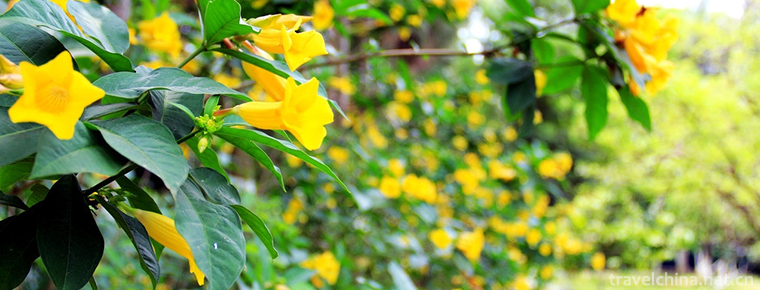
-
Lugu Lake
Lugu Lake, commonly known as Zuozuohai, the ancient name Lede Sea.
Views: 112 Time 2018-10-17 -
Fang te tourist area
Fang te tourist area is elaborately built by Huaqiang Fontewen Technology Group. It is a comprehensive leisure tourism resort integrating theme parks.
Views: 185 Time 2018-12-08 -
East China Bailey Winery
East China Wine Manor is located in Jiulongpo, Nanlongkou, Laoshan, Qingdao. It is the first European Wine Manor in China built strictly according to the European Wine Manor Model.
Views: 163 Time 2018-12-26 -
Nangongshan National Forest Park
Nangongshan National Forest Park, located in Langao County, Ankang City, Shaanxi Province, is a branch of Hualongshan Mountain of Daba Mountain System, 33 kilometers from the county seat.
Views: 166 Time 2018-12-27 -
Hongjiannao Scenic Area
Hongjiannao Scenic Area is located in Shenmu City, Shaanxi Province. It is located in the transitional zone between the Loess Plateau and Inner Mongolia Plateau, at the junction of Maowusu .
Views: 114 Time 2019-01-16 -
Jinjiang hot spring
Jinjiang Hot Spring is located on the Bank of Jinjiang River, Datian Town, Enping City, which is the hometown of hot springs in China. It is backed by Qixingkeng primitive forest, deep mountains and g.
Views: 156 Time 2019-01-29 -
Shanghai Changfeng Ocean World
Shanghai Changfeng Ocean World belongs to the world's largest aquarium chain brand of Merlin Entertainment Group, which is the first and second largest in Europe.
Views: 222 Time 2019-03-17 -
Cai Lifo quan
Cai Li Foquan is one of the Nanquan in Chinese traditional boxing. Legend has it that Chen Heng (1806-1875), a native of Jingmei Township, the new capital of Guangdong Province,.
Views: 177 Time 2019-04-04 -
Duodi dances
Multi-place dance, Tibetan folk dance, is a unique way for Tibetan people to dance and sing. It mainly distributes in three areas of Zhouqu County, Gansu Province.
Views: 347 Time 2019-04-28 -
Riddle
Riddles mainly refer to hidden words, such as allusions or words, which can be guessed by others. They can also be extended to things containing mysteries. Riddles originated from ancient Chinese folk.
Views: 294 Time 2019-06-04 -
China University Of Geosciences
China University of Geosciences is known as "Da Da". Ministry of Education of the People's Republic of China Directly under National Key Universities It's the state. 211 Project ",".
Views: 177 Time 2019-12-08 -
Huahu Lake
Huahu is located on the 213 national road between Ruoergai in Sichuan Province and Langmu temple in Gansu Province. It is a natural Haizi on the grassland of GER dam. Geer dam is the second largest grassland in China after Hulunbeir Grassland.
Views: 146 Time 2020-11-07
